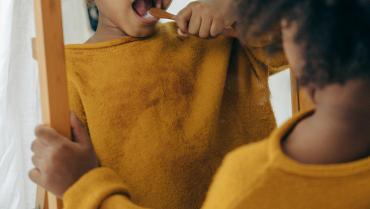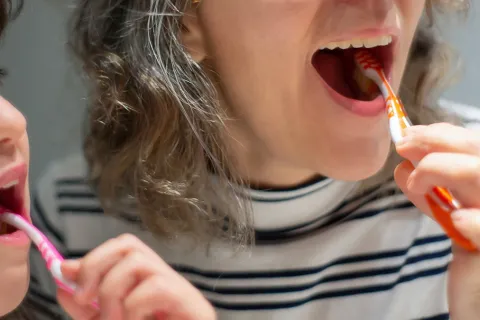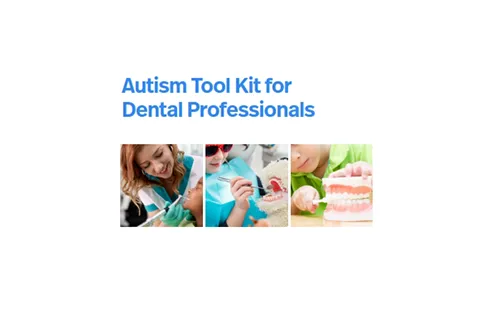Autism and brushing teeth
Dental Guide
Oral health is a very important component of healthy daily living. But for some autistic children, oral health habits can be challenging. In this excerpt from the Autism Speaks Dental Guide, get tips for helping your autistic child brush their teeth.
Tips for brushing your autistic child's teeth
To get started, you and your child should pick out the right toothbrush. There are many colors, styles, and types available. It is important that the brush is the right size for your child’s mouth and that it has soft bristles.
For some children with autism, brushing teeth can be difficult. The sensation can be uncomfortable at first, and the child may need to be desensitized. You may want to start by using the toothbrush to touch your child’s lips or just inside the mouth. You may also want to teach your child to “open wide,” so that this direction is understood. Showing your child how you brush your own teeth may also be helpful. When you're ready to brush your child's teeth, you can try these steps:
- Stand behind your child with their head on your chest.
- Put a pea size amount of toothpaste on the center of the brush.
- Guide the brush as if you were brushing your own teeth.
There are six steps to brushing teeth:
- Brush the outside, inside and tops of the bottom back teeth on one side of the mouth five times.
- Move up and brush the inside, outside and chewing surfaces of the top teeth five times.
- Brush the bottom front teeth outside and inside five times.
- Move to the opposite side and brush the bottom teeth outside and inside five times.
- Brush the top front teeth inside, outside, and chewing surfaces five times.
- Brush the opposite top back teeth inside, outside, and chewing surfaces five times.
Although most people brush their teeth in the bathroom, in order to accommodate your child and get them accustomed to brushing their teeth, you may want to do this on the couch or in another part of your home where they may feel more comfortable. The ultimate goal is for your child to brush their teeth as independently as possible.
Other tips that may be helpful
- Some families find it useful to use a timer so that the individual with an autism spectrum disorder (ASD) can see when the task will be over.
- Some individuals with autism benefit from visual supports and schedules which can be found in the guide.
- Some individuals need to be reinforced with verbal praise or a reward after each step. Others may be able to complete some, many, or all of the steps before verbal praise or a treat is needed. Each child will need to work at their own pace to achieve the skills necessary to brush their teeth.
- Once a manual toothbrush has been mastered, then a power brush can be introduced. The power brush is slightly different in that the brush does the work, so the individual no longer needs to do the “brushing.”
In all cases, the ultimate goal is for the individual with autism to brush their teeth as independently as possible.








